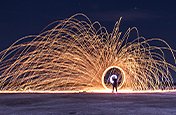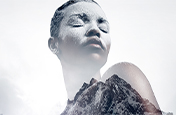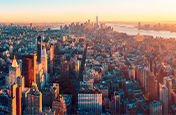Get creative with lensball photography.
Use a lensball to capture fresh perspectives and strange effects. Learn how lensballs work and get photography tips to take your lensball photos to the next level.
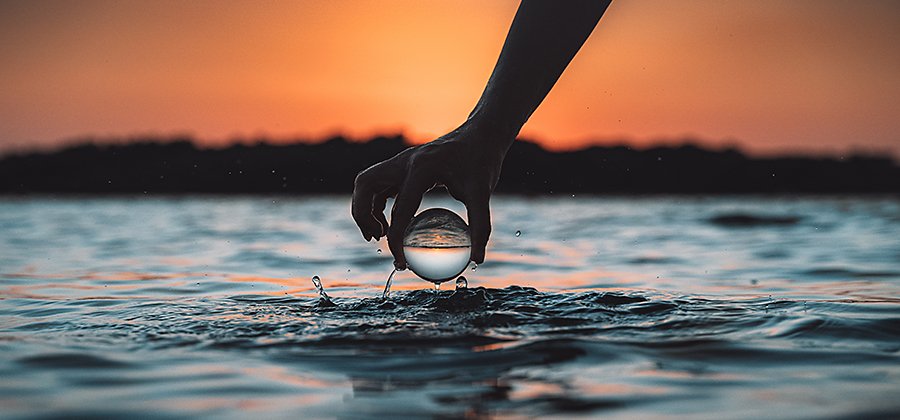
What is lensball photography?
Lensball photography is a creative photography technique that uses a glass ball to take an inverted image. The lensball acts as an external lens that approximates the look of a fish-eye lens with distorted edges and a panoramic angle of view. “As the light passes through from one side to the other, it inverts your image and distorts it, which gives you a different perspective,” says photographer Kevin Vierra.
This technique is also sometimes referred to as crystal ball photography, although most lensballs are made of glass. Keep this handy photography accessory in your camera bag to effortlessly transform all kinds of scenes.
Refraction explained.
Refraction occurs when light bends as it passes through an object of denser mass. The image you see when you look through a lensball is upside down because that’s how a spherical shape bends light. The same phenomenon happens with DSLR lenses due to their structure of concave and convex spherical elements. Whether you know it or not, you’ve probably already done refraction photography.
Pick the right lensball size for you.
Which lensball size you pick depends on personal preference, but keep in mind that smaller lensballs are lighter and easier to handle and transport, so they’re more beginner friendly. A larger lensball makes for a larger scene, but the tradeoff is that you can’t hold it in your hand and photograph it at the same time. Three common sizes are 60mm, 80mm, and 100mm, which are small, medium, and large, respectively. Sizes outside of these range from marble-sized all the way to melon-sized. An 80mm lensball is the happy medium for many professional photographers.
Leaded glass, unleaded glass, and quartz crystal are the three major categories of lensball materials. Photographer Virginia Chase uses a lensball made of K9 crystal, which is popular for its balance of high quality, clarity, and low cost.
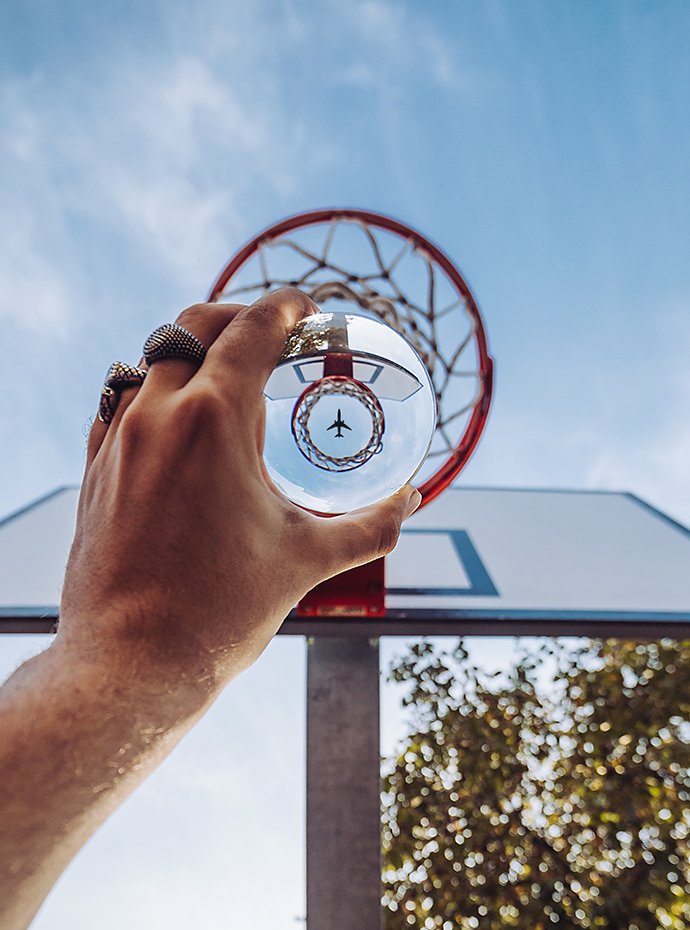
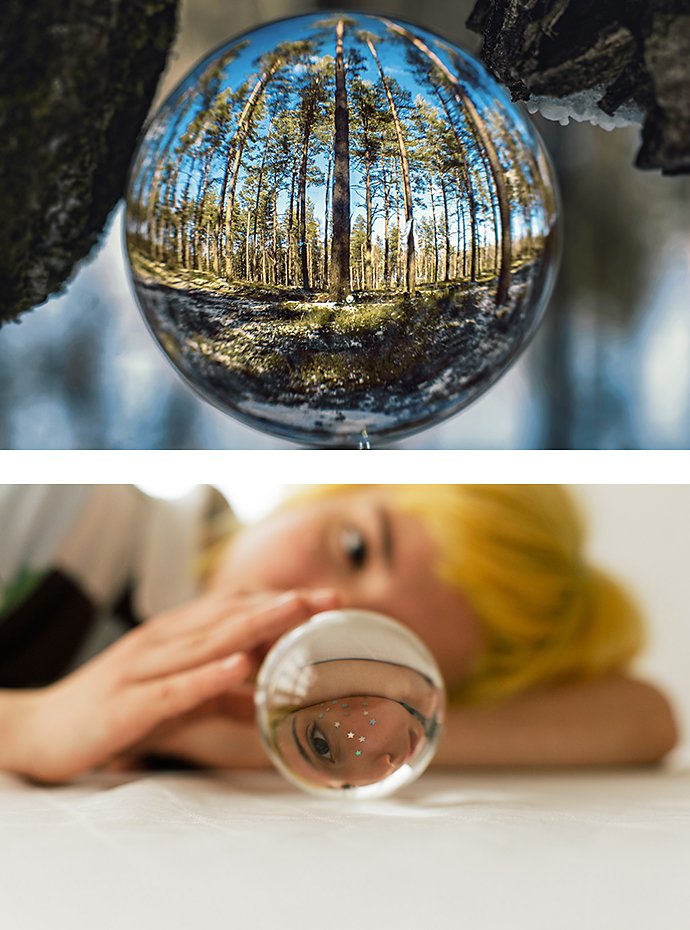
When and where to use your lensball.
There’s no right or wrong way to compose your lensball photo. “You can be zoomed in and up close to the lensball or you can zoom out for the whole picture,” says Chase. “Every angle in between is acceptable. It just depends on your preference and what you’re trying to convey. How much of the scene do you want to include? Do you want the viewer to see the background? Do you want more of a bokeh effect?”
“I do a lot of night photography and cityscapes,” says Vierra. “The lensball makes the colors in neon lights and water reflections pop. But I’ve seen people use it for landscape photography and creative portraits.”
“I like nature photography and wildlife shots,” adds Chase. “But the possibilities are endless. You can photograph anything through a lensball. It comes down to what interests you.”
How to set up your lensball.
You’ve got options when it comes to how you position your lensball.
Simply hold the ball in front of you. This is the most obvious option, but it’s not the easiest. You’ll have to manually focus at a shallow depth of field with one hand while balancing the ball in the other.
Borrow a friend to be your hand model. “It’s hard to focus your camera while you’re holding the ball,” says Vierra. “So if you have somebody that can be your hand model, it’ll be a lot easier.”
A lensball stand is a great option to keep your glass steady and safe. Some models screw onto the top of your tripod, while others are made of glass that you can set on a flat surface.
Finally, you can use your surroundings to get creative with your placement. One of Vierra’s most memorable shots was taken with the lensball in an ice cream cone refracting a Ferris wheel. “I’ve set mine on a rock or a stone wall, in a tree, in the sand on the beach,” adds Chase. “There’s really no set spot to put your lens.”
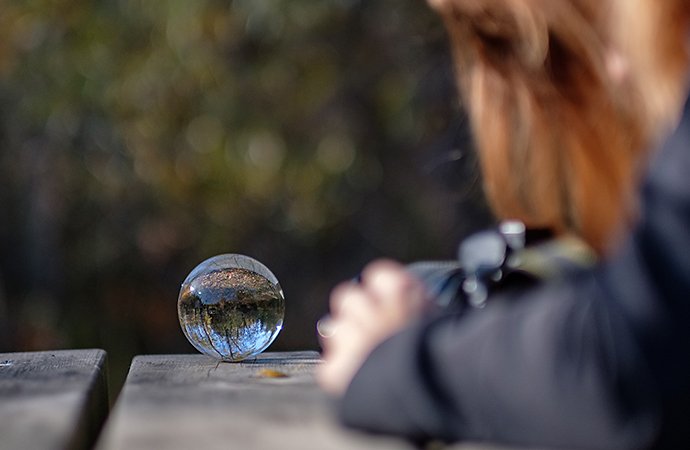
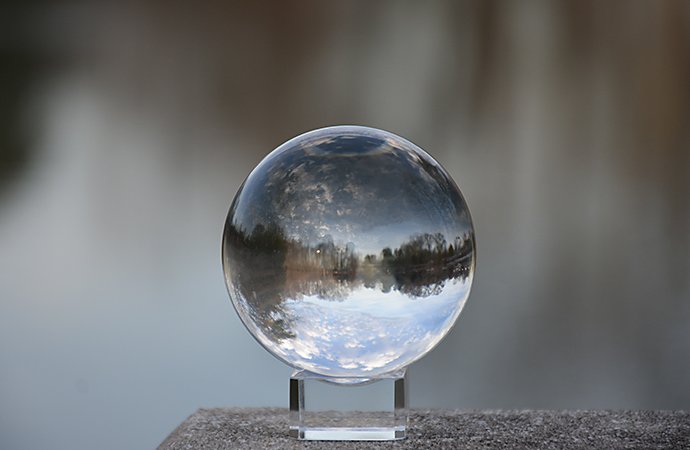
Tips for lensball handling.
“The most crucial thing is to avoid holding it with your bare hands a lot because the oils in your skin will tarnish the lensball over time,” says Vierra. Clean and care for your lensball just like you would your camera lens. Wipe it off with a microfiber cloth and use a glass spray to keep it crystal clear.
Don’t leave your lensball out in the sun for too long, and if you put it in your car, keep it in a protective case. “Essentially a lensball is a magnifying glass, so if you’re not careful, it can set something on fire,” warns Chase.
How to get crystal clear shots.
Camera settings.
Lensball photography is one of the rare cases where manual focus is easier to work with than autofocus. “You want the focus to be on the very center of the ball,” says Vierra. “The wider the aperture, the better. A lot of people don’t like to go much higher than f/4. I go all the way to f/1.4 or f/2.8 depending on what lenses I have. I like a blurry background with bokeh better because it really sucks you into the center of your image.”
Any focal length or camera lens will work with lensballs — even your iPhone can take decent shots — but if you want to get really close to the glass, you’ll want a macro lens. If you want to be able to see the background and the scene around the lensball, go with a wide-angle lens.
“If you’re not in the proper position, your reflection will show up in the lensball,” says Chase. “If the light’s behind me, it shows my reflection.” Position yourself for a side-lit shot or shoot into direct sunlight for the best results. On cloudy days, you don’t have to worry about accidental reflections as much. “Be mindful of where the light is coming from because that makes a huge difference in the clarity of your shot,” says Chase.
Work your magic in post-processing.
You don’t have to nail your shot in-camera. In lensball photography, experimentation and surreal effects are expected and celebrated. Push your creativity with photo editing tools like Adobe Photoshop and Photoshop Lightroom and find out what's possible. You can remove your hand or lensball stand in Photoshop for a floating ball effect, flip the upside-down image so it’s right side up, or colorize the lensball to make it contrast with the background.

Photo by Kevin Vierra
Get the ball rolling.
Part of the appeal of lensball photography is that there’s no prescriptive way you should use it. “Just experiment with it. Figure out what you like to do with it,” says Chase. “I looked at what other people were doing with lensballs to get inspiration and think about how I wanted to set up my shots.” A great way to refine your technique is to try to recreate photos you admire. Load up on lensball photography ideas on Behance or search social media to gather inspiration.
“When I first started using the ball that I have, it was all trial and error,” says Vierra. “The easiest thing for anybody to do when starting out is get discouraged. But you have to just go for it. If you make an image and it doesn’t look right, look at your surroundings and settings and figure out what you can do to make that image more like what you visualize.”
Now that you’ve got crystal clarity, it’s time to get out and make the unique images only you can make.
Contributors
Do more with Adobe Photoshop Lightroom.
Edit photos easily with Lightroom presets, Super Resolution, easily share photos from any device and access your projects anywhere with cloud photo storage management.
You might also be interested in…
Exploring light painting techniques.
Learn the basics of light painting and how to use the night as a canvas and light sources as a brush.
The world of double exposure photography.
Explore double exposure photography and learn how to create one yourself.
Understanding the art of surreal photography.
Look into the world of surrealism and find out how to make your own dreamlike images.
Taking advantage of the golden hour.
Explore how to seize the short moment that many photographers call the best time of day to shoot.
